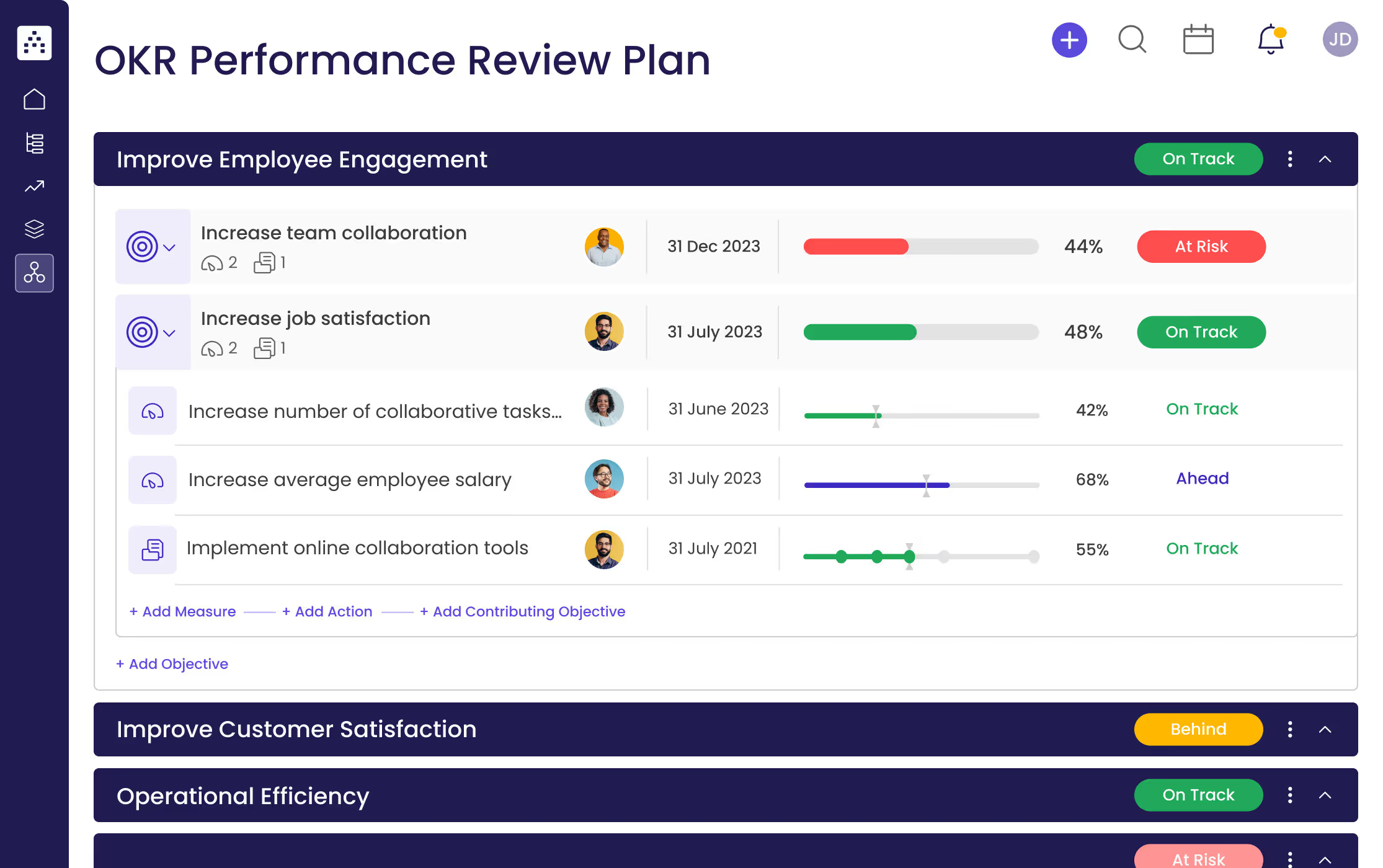What is an OKR Performance Review?
OKR Performance Reviews are an effective way to track, measure, and review the progress of your organization's objectives, key results, and associated projects. The review allows you to evaluate the overall performance of your OKRs. This template provides a structure and guidance for reviewing the performance of your OKRs, so your team can make the necessary adjustments to ensure success.
What's included in this OKR Performance Review template?
- 3 focus areas
- 6 objectives
- 6 projects
- 6 KPIs
Each focus area has its own objectives, projects, and KPIs to ensure that the strategy is comprehensive and effective.
Who is the OKR Performance Review template for?
This OKR Performance Review template is designed to help teams of all sizes and industries review the performance of their OKRs. This template can be used as a starting point to create an effective performance review process, allowing teams to identify and address areas of improvement quickly and efficiently.
1. Define clear examples of your focus areas
The OKR Performance Review template starts with defining focus areas for the review. A focus area is a broad topic that outlines the overall purpose and direction of the OKRs. These focus areas help to provide context for the objectives and key results, so the team can work together to achieve the desired outcomes.
Examples of strategic focus areas that could fall under a OKR Performance Review could be: Improve Employee Engagement , Improve Customer Satisfaction, and Operational Efficiency.
2. Think about the objectives that could fall under that focus area
Once a focus area has been defined, the team should think about the objectives that can be included in the review. An objective is a measurable goal that the team wants to achieve within the focus area. It's important to have clear and achievable objectives so the team knows what they are trying to accomplish.
Examples of some objectives for the focus area of Improve Employee Engagement could be: Increase team collaboration , and Increase job satisfaction .
3. Set measurable targets (KPIs) to tackle the objective
After the objectives have been identified, the team should set measurable targets (KPIs) to track the progress of the objectives. KPIs are important because they provide a quantitative way to measure the success of the objectives. It's important to set measurable targets that are realistic and achievable.
An example of a KPI for the focus area of Improve Employee Engagement could be: Increase number of collaborative tasks completed.
4. Implement related projects to achieve the KPIs
Once the KPIs have been set, the team should implement related projects to achieve the KPIs. A project (action) is an actionable plan that outlines the steps the team needs to take in order to reach the desired outcome. It's important to create an actionable plan that can be followed by the team to ensure that the objectives are achieved.
An example of a project related to Improve Employee Engagement could be: Implement online collaboration tools .
5. Utilize Cascade Strategy Execution Platform to see faster results from your strategy
The Cascade Strategy Execution Platform is a powerful tool that can help teams quickly and efficiently review the performance of their OKRs. The platform provides a structure and guidance for creating and managing OKRs, so teams can see faster results from their strategy.


